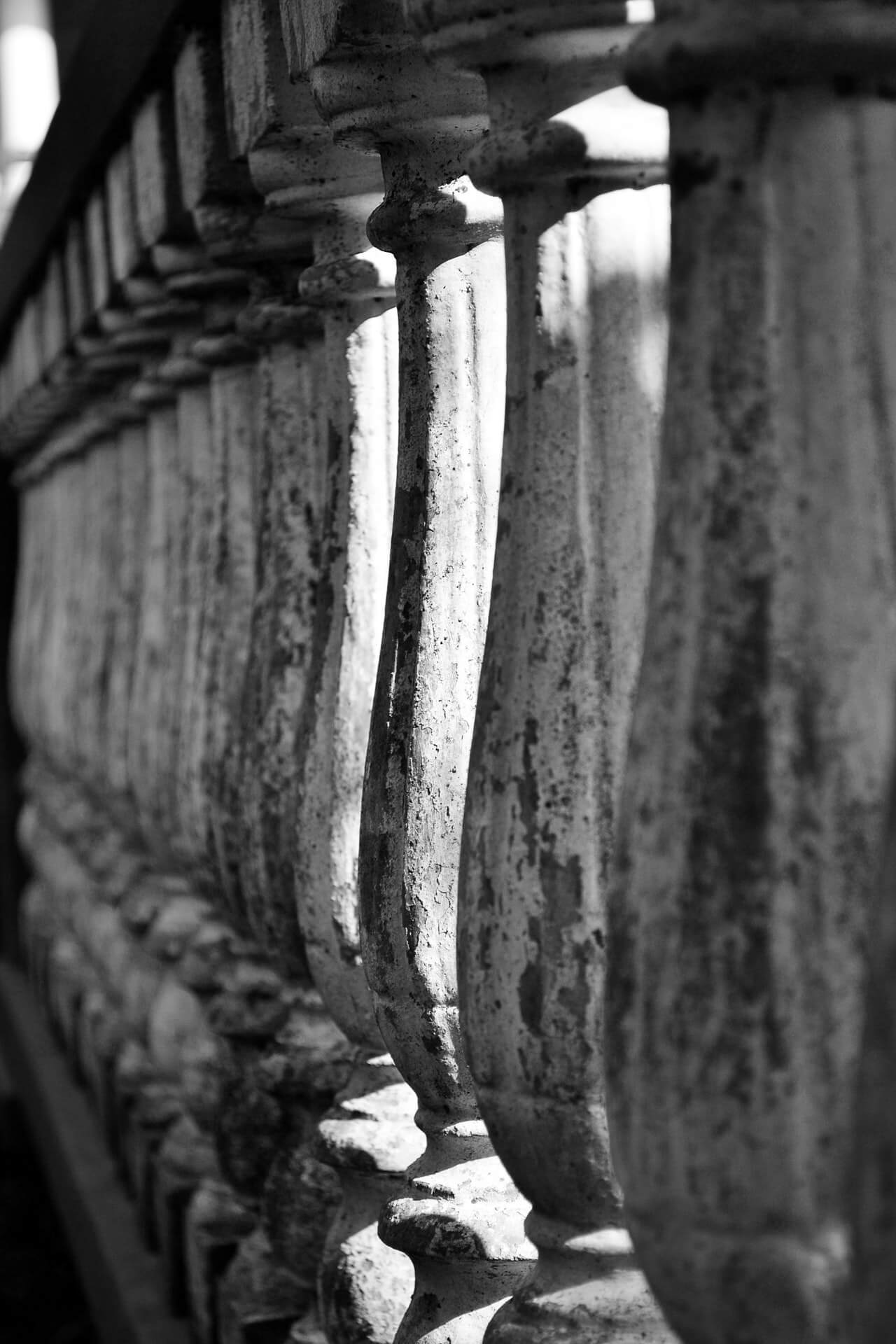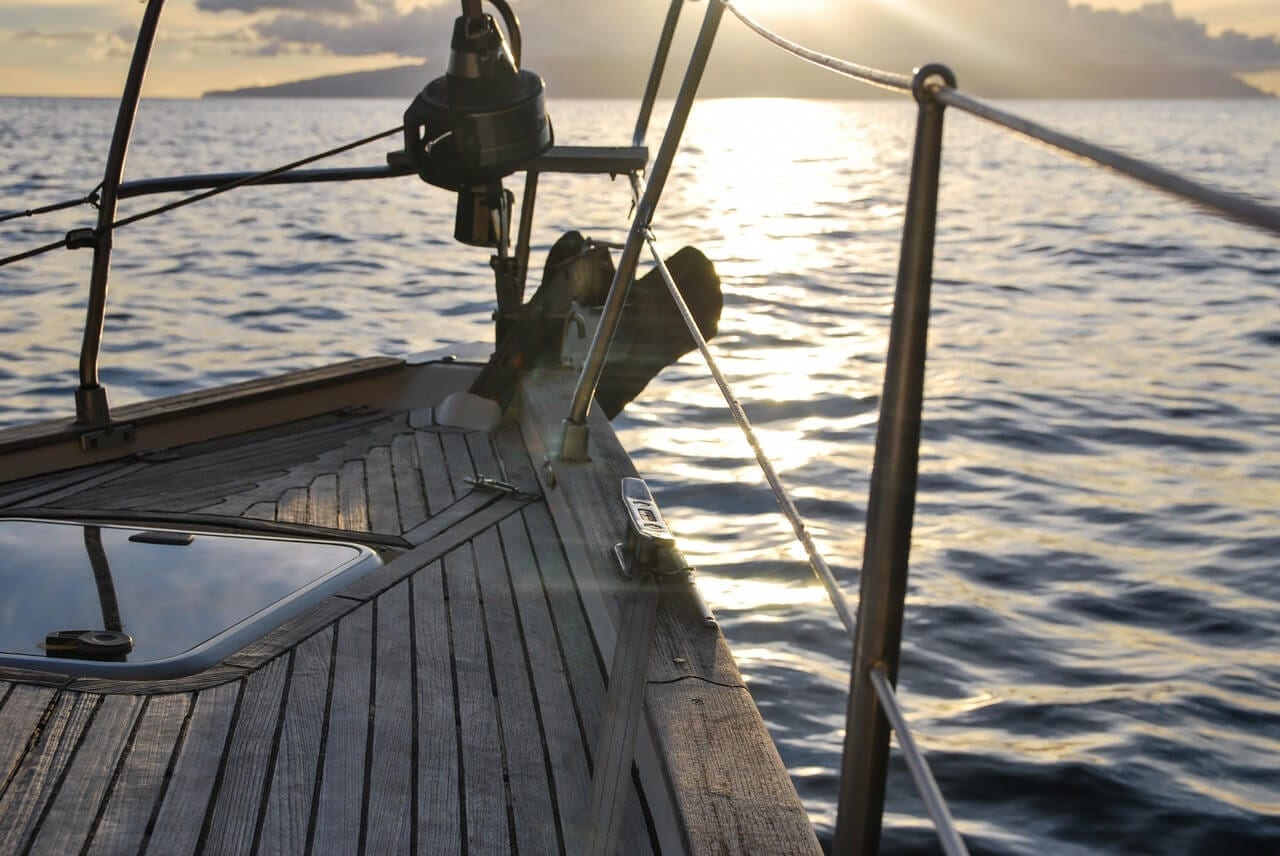Balustrades are, in essence, a type of protective barrier that you’ll commonly see in places such as garden decking or lining the rails of a yacht. They have become an important part of modern, contemporary design. While maintaining their quality as a safe barrier for the user.
Given their importance in design, there is more than one way to construct a balustrade. And you’ll see them created from wood or stone. Another popular item used is our very own
wire rope. Commonly associated with lifting and lowering tasks, who would have guessed that they have an aesthetic quality too?!
 This is an example of a traditional baluster, constructed from concrete
This is an example of a traditional baluster, constructed from concrete
Below, we’ve explained more on
balustrades, where you’ll find them, and why wire rope is a perfect solution.
What are balustrades?
As we briefly touched on above, a balustrade is a form of barrier. It is made up of several
balusters, the name given to each individual shaft. In the Cambridge Dictionary, it is
defined as "a railing or wall to prevent people from falling over the edge of stairs, a balcony, etc” But, in truth, balustrades have become much more than this now.
Their primary purpose is to offer safety. They can also be designed and crafted in such a way so as to provide aesthetic appeal too. Or, in some cases, to blend in so easily with the background that you may not even notice that it is there!
 An example of a rope balustrade, commonly used on yachts
An example of a rope balustrade, commonly used on yachts
They are certainly not a new invention. They actually have a history dating back to the
Assyrian period, somewhere between 2500 BC and 609 BC. A baluster is not just used for a balustrade, and you’ll see the same kind of shaft being used for items such as chair legs too; this is one of the primary uses that it had throughout much of history.
As with much of architecture, the style and shape of balusters, along with the material used, has changed and adapted throughout history. They now enjoy extensive usage in the modern world, being used on yachts, as home décor, for stair railings or as balcony barriers.
The balustrade has become a more contemporary piece of architecture now. And architects look for materials that are not only safe and reliable, but that are pleasing to the eye as well. For this reason, wire rope has become a popular material.
Why is wire rope a good solution?
Wire rope balustrades are now commonplace in many structures. There are two primary reasons for this. Not only do they look good, but they are one of the strongest and safest materials available to architects, builders and home owners.
The rope itself is a relatively young piece of equipment when compared to the much longer history of balustrades. It can date its
modern history back to 1824, although of course it has a much longer history when it comes to rope itself. It was initially invented as a solution to a problem in a mine, where the current lifting mediums weren’t reliable enough.
Not only did it solve this problem, but it has quickly grown since then to become a multi-functioning piece of equipment, with uses across dozens of industries around the world – more on this below!
It is a strong, stable piece of equipment that is constructed from several metal wires and strands. This is a huge benefit, as steel chains, which wire rope often replaces, relies heavily on each individual chain. Rope, however, spreads the pressure out across all of the strands.
Wire rope is also an incredibly strong material, and so its primary function, to provide a safe and stable barrier, will more than be fulfilled. It is also designed to be resistant to corrosion and rust. This is crucial, given the fact that it will typically be used outdoors. Other materials used for balustrades may not enjoy such resistance over the same time period.
Finally, given its somewhat thin nature, as compared to traditional balusters that are thick stone, it will still leave you plenty of view wherever you install it. Be it a balcony or garden decking, it will blend seamlessly into wherever it is installed.
The different types of wire rope balustrade
Another huge benefit is the variety of options that are available. There are multiple end terminations, meaning that you can choose the best possible combination for wherever you want to install it. We have:
- Rigging screws
- Swage forks
- Swaged studs
- Swage eyes
- Swageless studs
- Thread eyebolts
- Woodscrew eyebolts
- Cone head stops
- Small eye plates
- Medium eye plates
- Shackles
Alongside this, the wire rope itself can come in multiple lengths and diameters. Combined with the many options available above, you are left with an almost limitless selection when it comes to choosing your balustrade.
Finally, we can even offer bespoke wire rope balustrade kits. This will be suited to your exact requirements, meaning it will leave a perfect end-finish. This great deal of variety means that you are more than likely to find something that is perfect for the application that you have in mind. However, should wire rope not be the right type of product for your environment, we would be more than happy to suggest alternatives elsewhere. You can find out contact details below.
Are you looking for more information?
As you can see from the above information, wire rope is one of the most adaptable and useful pieces of equipment available on the market today. As well as its use as an aesthetic barrier, it has dozens of other uses around the world too. It is
used in other industries such as:
- Construction
- Mining
- Automotive
- Engineering
- Aerospace
- Warehousing
- Military
If you would like to find out more about this equipment, or if you are interested in sourcing your own wire rope balustrade, then we would be more than happy to assist you. You can get in contact with us
here.
 This is an example of a traditional baluster, constructed from concrete
Below, we’ve explained more on balustrades, where you’ll find them, and why wire rope is a perfect solution.
This is an example of a traditional baluster, constructed from concrete
Below, we’ve explained more on balustrades, where you’ll find them, and why wire rope is a perfect solution.
 An example of a rope balustrade, commonly used on yachts
They are certainly not a new invention. They actually have a history dating back to the Assyrian period, somewhere between 2500 BC and 609 BC. A baluster is not just used for a balustrade, and you’ll see the same kind of shaft being used for items such as chair legs too; this is one of the primary uses that it had throughout much of history.
As with much of architecture, the style and shape of balusters, along with the material used, has changed and adapted throughout history. They now enjoy extensive usage in the modern world, being used on yachts, as home décor, for stair railings or as balcony barriers.
The balustrade has become a more contemporary piece of architecture now. And architects look for materials that are not only safe and reliable, but that are pleasing to the eye as well. For this reason, wire rope has become a popular material.
An example of a rope balustrade, commonly used on yachts
They are certainly not a new invention. They actually have a history dating back to the Assyrian period, somewhere between 2500 BC and 609 BC. A baluster is not just used for a balustrade, and you’ll see the same kind of shaft being used for items such as chair legs too; this is one of the primary uses that it had throughout much of history.
As with much of architecture, the style and shape of balusters, along with the material used, has changed and adapted throughout history. They now enjoy extensive usage in the modern world, being used on yachts, as home décor, for stair railings or as balcony barriers.
The balustrade has become a more contemporary piece of architecture now. And architects look for materials that are not only safe and reliable, but that are pleasing to the eye as well. For this reason, wire rope has become a popular material.